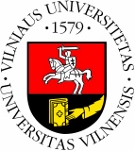Studies and researches
2/2025
State Formation in Romania: A Successful Story of Nationalism and Centralization, 1848-1864
Historically, the Romanian state’s formation began roughly with the Revolution of 1848, the first concrete,
major movement for the unification of the Romanian principalities. Following decades of building both
internal and external support for the idea of a single Romanian state, Moldavians and Wallachians benefited
from a favourable global context and accomplished the union of 1859. This was based on the Paris
Convention of 1858, which acknowledged Romanian unionist ideals. This de jure unification was, however,
only the first stage in the process of the Romanian state’s formation. An extensive and multifaceted
development of administrative centralization comprised the second stage of state formation, which
corresponds to the de facto unification. Considering the two distinct phases of Romanian state formation,
170 years after the first step toward Romanian unification and 100 years after its full expression in 1918, this
article argues that the two factors that best account for the successful formation of the Romanian state are
nationalism and centralization.
state formation, nationalism, centralization, unification, Romania
F52, F59, O52
F52, F59, O52














